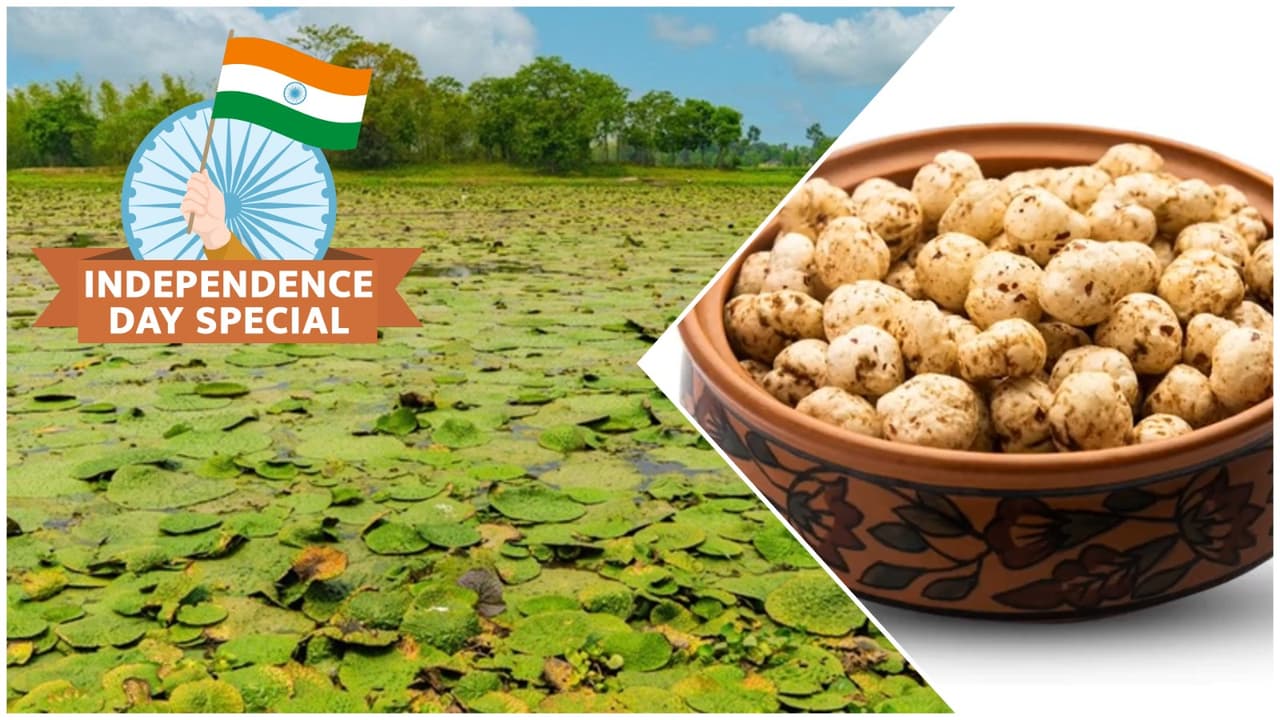People of America and Europe are eating Makhana in Bihar today as super food. Satyajit Kumar Singh, known as Makhana Man of India, has not only brought revolution in the cultivation of Makhana, but has also benefited the farmers.
15 August 2025: We are going to celebrate our 79th Independence Day on 15 August 2025. Slavery made India one of the poorest countries in the world. After independence, we made progress in every field and today are the fourth largest economy in the world. There was a time when our country had to import maize to feed its people. Today India is supplying food grains and other food products in the world.
Food products like Makhana in India are demanded worldwide. It is considered a super food. Makhana, which grows in Bihar’s field, is reaching the plate of people of America-Europe today. According to Makhana exporter Satyajit Kumar Singh, about 2 thousand tonnes of Makhana is exported from India every year. It is mainly grown in Bihar.
Who is Satyajit Kumar Singh?
Satyajit Kumar Singh was born in a farmer family in Jamui district of Bihar. Makhana has been cultivated in Bihar for decades, but earlier it was unorganized. Small farmers would grow Makhana and take advantage of their rights. Satyajit changed this situation. He started a company called Shakti Sudha Industries and added farmers with him. Today, about 20 thousand farmers are connected to them.
Satyajit directly buys Makhana grains and processes from farmers. This has increased the income of farmers. Satyajit is also called Makhana Man of India due to contribution to the field of Makhana. Before Satyajit worked in the field of Makhana, farmers had to sell Makhana seeds up to Rs 40 a kg. Today they are getting more than Rs 400 per kg.
How did Satyajit change the cultivation of Makhana?
Satyajit introduced Makhana in the market as super food instead of just a healthy breakfast. Makhana is fat free. Being rich in fiber, it is good for the stomach. Along with this, it is also full of nutrients. Satyajit prepared and exported several products from Makhana. This gave a good price for Makhana. When farmers benefited, they increased farming. Makhana cultivation has increased from 1,500 hectares to more than 25,000 hectares.
Also read- Local for Global: Akash Missile Demand after Operation Sindoor, four aircraft drops at once
Where is the cultivation of Makhana?
Makhana is cultivated mainly in 38 blocks in 8 districts of Bihar. Earlier Makhana was mostly grown in large lakes or ponds. Now it is being grown in the fields filled with waterlogging and flood water. Makhana plant is aquatic. It requires 1.5 to 2 feet deep water to grow.
